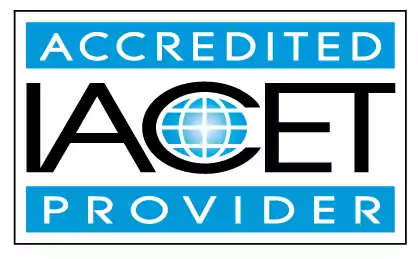Select strategies to increase scientific inquiry in the infant and toddler classroom.
Central Objective: Select evidence-based strategies to increase scientific inquiry in the infant and toddler classroom. Supporting Element: Identify practical, age-appropriate approaches to foster ongoing scientific exploration within early childhood education and child care centers. Learn how to implement these strategies to nurture curiosity, observation, and critical thinking from infancy through toddlerhood.Trainings incorporating this outcome
CDA Subject Areas
Proficiency Level
Target Audience
Topic Areas
Price
States
Alabama (2) Alaska (2) Alberta (2) Arizona (2) Arkansas (1) Australia (2) British Columbia (1) California (2) Colorado (2) Connecticut (2) Delaware (2) District of Columbia (2) Florida (2) Georgia (2) Hawaii (2) Idaho (2) Illinois (1) Indiana (2) Iowa (2) Jamaica (2) Kansas (2) Louisiana (2) Maine (2) Manitoba (2) Maryland (2) Massachusetts (2) Michigan (2) Minnesota (2) Mississippi (2) Montana (1) Nebraska (2) Nevada (1) New Hampshire (2) New Jersey (1) New Mexico (2) New York (1) Newfoundland and Labrador (2) North Dakota (2) Nova Scotia (1) Ohio (2) Oklahoma (2) Ontario (2) Oregon (2) Pennsylvania (2) Prince Edward Island (1) Puerto Rico (2) Quebec (1) Rhode Island (2) Saskatchewan (2) South Carolina (1) South Dakota (2) Tennessee (1) Texas (2) Thailand (2) United Kingdom (2) Utah (2) Vermont (2) Virgin Islands (2) Virginia (2) Washington (2) West Virginia (2) Wisconsin (1) Wyoming (1)
6 hours courses
2 hours courses
Related Outcomes
- Identify strategies to increase scientific inquiry in the infant and toddler classroom
- Select strategies to ensure appropriate infant and toddler supervision.
- Identify strategies for integrating culture and diversity into an infant and toddler program
- List safety risks for infants and toddlers and strategies to diminish these risks.
- Identify strategies to ensure appropriate infant and toddler supervision.
- Identify types of abuse in infants and toddlers.
- Identify infant and toddler materials and equipment
- Describe the impact of culture on infant and toddler development
- Identify strategies to increase parent involvement in the school-age setting.
- List and review tracking systems to monitor the daily feeding schedule of infants and toddlers
- Identify indoor activities to plan for infants and toddlers during inclement weather.
- Identify strategies to facilitate learning in the early childhood classroom using various methods.
- Demonstrate an understanding of developmentally appropriate practices for infants and toddlers with developmental, emotional, cognitive, language and/or physical needs
- Demonstrate an understanding of developmentally appropriate practices for infants and toddlers with developmental, emotional, cognitive, language and/or physical needs.
- Define healthy practices to mitigate the spread of germs and decrease the likelihood of SIDS in infants and toddlers.
- Give examples of strategies to prevent traumatic brain injuries in infants and young children.
- Give examples of strategies caregivers can use to ensure safe sleeping habits and the prevention of SIDS/SUIDS in infants.
- Demonstrate understanding of the impact of culture on infant and toddler development
Related Articles
- Full STEAM Ahead!
- Infant and Toddler Training Courses
- Science is All Around You
- Exploring Science with…Art?
- National Learn About Butterflies Day
- The Scientific Method in the Classroom!
- Bye Bye Winter: The Role of Outdoor Play in Early Childhood Development
- STEAM Playground: How to Turn Your Kitchen into a Science Lab
- Little Einstein’s Lab: Fun DIY Science Activities for Early Learners
- Winter Wonders: Incorporating Seasonal Science in Preschool Curriculum
- CDA Certificate Made Simple: How to Earn Your Child Development Associate Credential
- 😫🧸 What Should I Do When a Baby Won’t Nap in the Classroom?
- ChildCareEd Courses for Pennsylvania Child Care Providers
 0.6 CEUs
0.6 CEUs